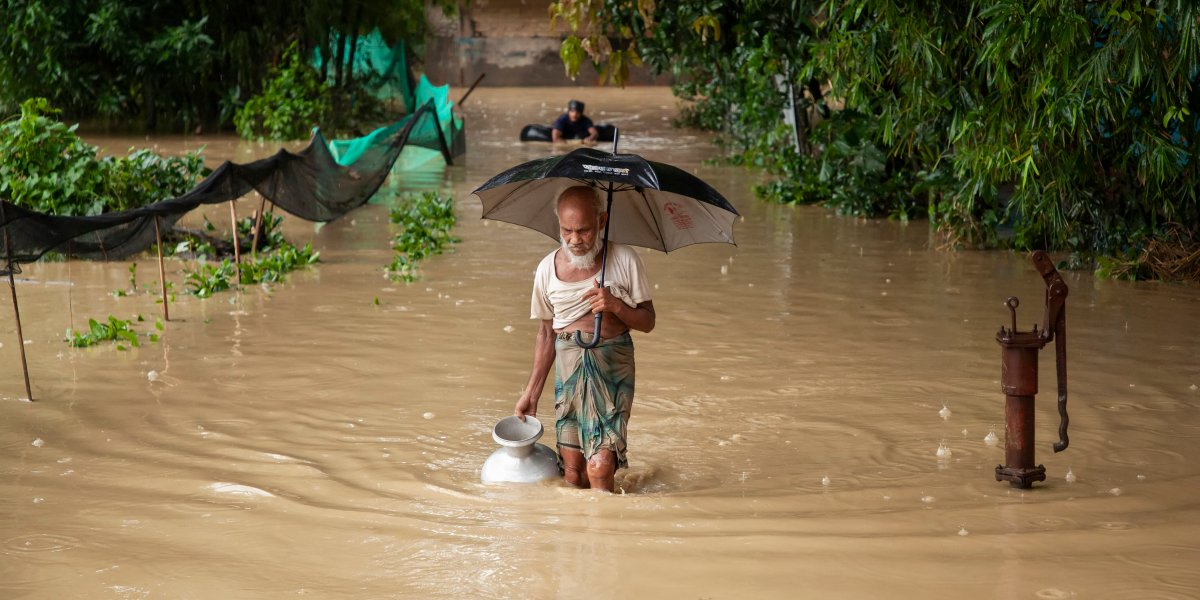After five consecutive days of heavy rainfall, the streets in Satkania Upazila of South Chittagong in Bangladesh were inundated in August 2023. 70 percent of the global population can expect strong and rapid changes in extreme temperatures and rainfall in the next 20 years, a new study finds. Photo: Istock/Muhammad Amdad Hossain
Extreme weather to strengthen rapidly over next two decades
70 percent of the global population can expect strong and rapid changes in extreme temperatures and rainfall in the next 20 years unless greenhouse gas emissions are cut dramatically, according to a new study.
Led by scientists from the CICERO Center for International Climate Research and supported by the University of Reading, the research shows that still 20 per cent of the population could face these same risks if emissions are cut enough to reach the aims of the Paris agreement.
Global warming is rapidly shifting climate conditions away from what societies and ecosystems are adapted to. One important question is how quickly these changes happen in different countries, but this has so far been less studied than the overall effect on extreme weather. The new paper, published in the journal Nature Geoscience, shows how global warming can combine with normal variations in the weather, to produce decade long periods of very rapid changes in both extreme temperatures and rainfall - a combination that nature and society are very vulnerable to.
Dr Carley Iles, lead author of the research at CICERO, said: “We focus on regional changes, due to their increased relevance to the experience of people and ecosystems compared with the global mean, and identify regions projected to experience substantial changes in rates of one or more extreme event indices over the coming decades.”

Unprecedented conditions
By using large ensembles of climate model simulations, the study shows that large parts of the tropics and subtropics, encompassing 70 percent of current population, are expected to experience strong joint rates of change in temperature and precipitation extremes combined over the next 20 years, under a high-emissions scenario. With strong emissions mitigation, the number is expected to drop to 20 percent, or around 1.5 billion people.
Rapid changes increase the risk of unprecedented conditions and extreme events that currently account for a disproportionate share of the realized impacts of climate change. For example, heatwaves may cause heat stress and excess mortality of both people and livestock, stress to ecosystems, reduced agricultural yields, difficulties in cooling power plants, and transport disruption. Similarly, precipitation extremes can lead to flooding and damage to settlements, infrastructure, crops and ecosystems, increased erosion and reduced water quality. Thus, society seems particularly vulnerable to high rates of change of extremes, especially when multiple hazards increase at once.
Clean-up risks
Dr Laura Wilcox, co-author at the University of Reading, said: “We also find that rapid clean-up of air pollution, mostly over Asia, leads to accelerated co-located increases in warm extremes and influences the Asian summer monsoons. While cleaning the air is critical for health reasons, air pollution has also masked some of the effects of global warming. Now, the necessary cleanup may combine with global warming and give very strong changes in extreme conditions over the coming decades.
While the new paper focuses on the likelihood of rapid change, the authors emphasize that the results have important implications for climate adaptation. “In the best case, we calculate that rapid changes will affect 1.5 billion people. The only way to deal with this is to prepare for a situation with a much higher likelihood of unprecedented extreme events, already in the next 1-2 decades” says Dr. Bjørn H. Samset at CICERO Center for International Climate Research. Samset has contributed to the newly published study.
